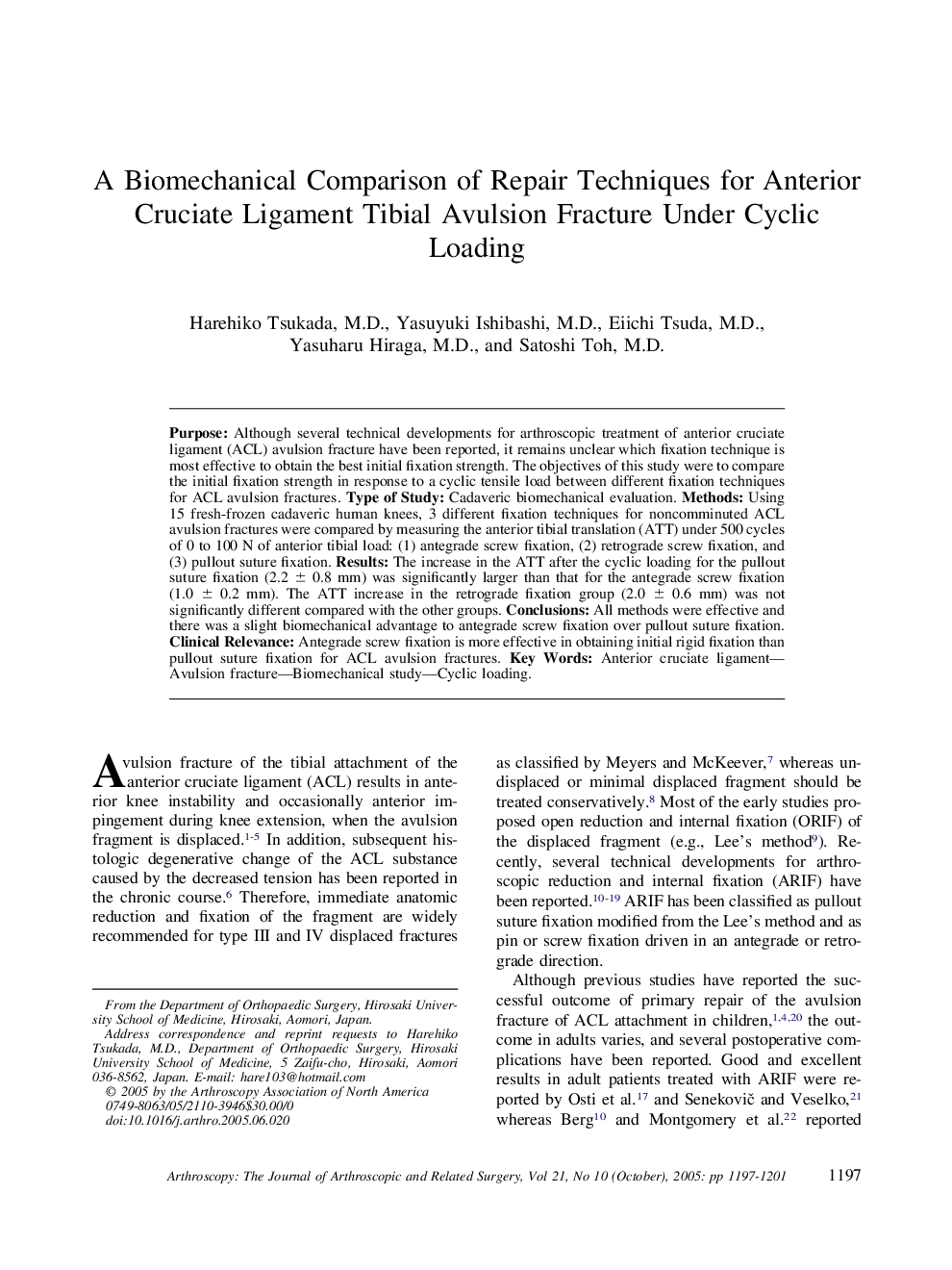| Article ID | Journal | Published Year | Pages | File Type |
|---|---|---|---|---|
| 10078814 | Arthroscopy: The Journal of Arthroscopic & Related Surgery | 2005 | 5 Pages |
Abstract
Purpose: Although several technical developments for arthroscopic treatment of anterior cruciate ligament (ACL) avulsion fracture have been reported, it remains unclear which fixation technique is most effective to obtain the best initial fixation strength. The objectives of this study were to compare the initial fixation strength in response to a cyclic tensile load between different fixation techniques for ACL avulsion fractures. Type of Study: Cadaveric biomechanical evaluation. Methods: Using 15 fresh-frozen cadaveric human knees, 3 different fixation techniques for noncomminuted ACL avulsion fractures were compared by measuring the anterior tibial translation (ATT) under 500 cycles of 0 to 100 N of anterior tibial load: (1) antegrade screw fixation, (2) retrograde screw fixation, and (3) pullout suture fixation. Results: The increase in the ATT after the cyclic loading for the pullout suture fixation (2.2 ± 0.8 mm) was significantly larger than that for the antegrade screw fixation (1.0 ± 0.2 mm). The ATT increase in the retrograde fixation group (2.0 ± 0.6 mm) was not significantly different compared with the other groups. Conclusions: All methods were effective and there was a slight biomechanical advantage to antegrade screw fixation over pullout suture fixation. Clinical Relevance: Antegrade screw fixation is more effective in obtaining initial rigid fixation than pullout suture fixation for ACL avulsion fractures.
Related Topics
Health Sciences
Medicine and Dentistry
Orthopedics, Sports Medicine and Rehabilitation
Authors
Harehiko M.D., Yasuyuki M.D., Eiichi M.D., Yasuharu M.D., Satoshi M.D.,
